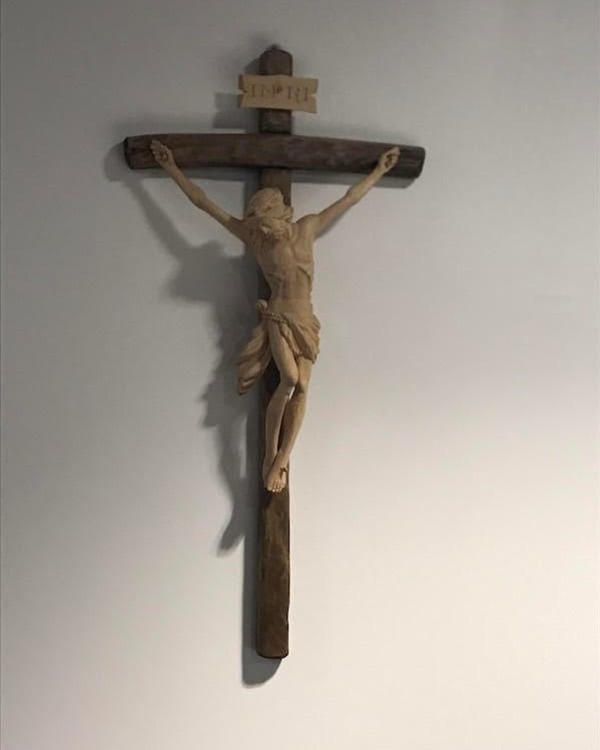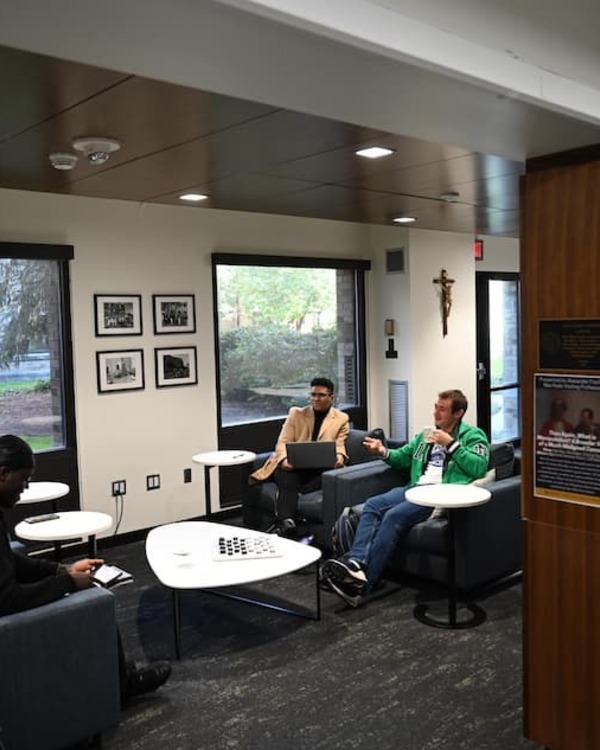Oberammergau Cross I
Oberammergau, a small town in the German southern state of Bavaria, is known for its skilled woodworkers. Max Keller, one of these woodworkers and the crafter of this crucifix, was born in Oberammergau in 1940. He began his woodcarving apprenticeship at Schauer & Mangold in Oberammergau in 1954. He is also a member of the St. Lukas Verein: Vereinigung der Oberammergauer Holzschnitzer (The Association of Oberammergau Woodcarvers). Keller is currently the owner of the woodcarving shop Holzschnitzerei located in Oberammergau, where he mostly produces wood carvings of religious figures. This is one of the few remaining family woodcarving operations that still sells its own original work.
This particular cross is 60cm long and the body of Christ is 30cm long. The depiction of the crucifixion does not shy away from showing Christ’s pain. His ribs are exposed, along with the nails by which Christ was nailed to the cross. Christ appears weak and exhausted. His head lays to the side and he is sinking down in pain and agony. Although this crucifix is not a Gabelkreuz, or forked cross, Christ himself does appear to be portrayed in a similar shape (more information on the Keller Fork Cross page).
Along the top of the post sits a sign that reads “I.N.R.I”. These letters are an abbreviation for “Jesus Nazarenus, Rex Judaeorum” or “Jesus of Nazareth, King of the Jews”. This inscription was written in three languages during the crucifixion of Jesus: Hebrew, Latin, and Greek. In the Latin script, “I” and “J” are generally not distinguishable from one another, which is why “I” is used instead of “J” in the inscription. The Romans commonly included a titulus, or label, above those being crucified as a representation of the charges against them. This titulus was set above Jesus as a symbol of mockery.
This crucifix has a slightly smaller, yet nearly identical, counterpart made in a lighter colored wood. It is also featured on campuscrucifixes.nd.edu. Both crucifixes were crafted by Max Keller in Oberammergau.


